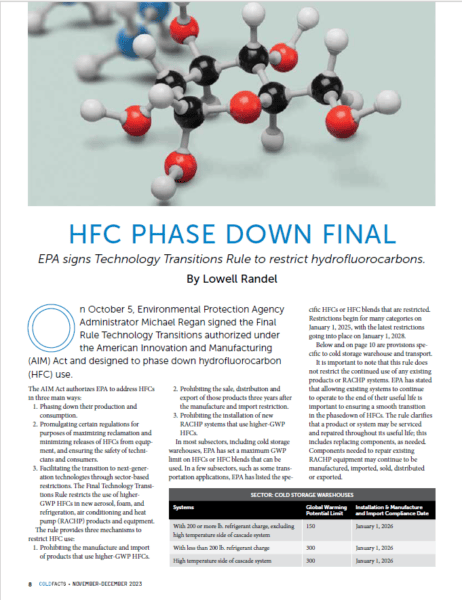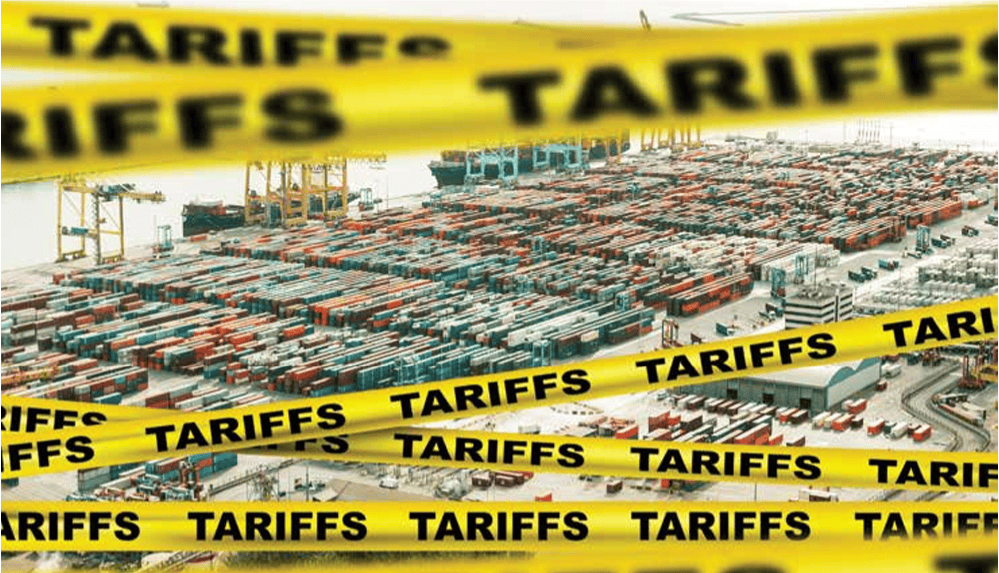From COLD FACTS Magazine (Click Image)
Read Below:
HFC Phase Down Final
EPA signs Technology Transitions Rule to restrict hydrofluorocarbons.
By Lowell Randel
On October 5, Environmental Protection Agency Administrator Michael Regan signed the Final Rule Technology Transitions authorized under the American Innovation and Manufacturing (AIM) Act and designed to phase down hydrofluorocarbon (HFC) use.
The AIM Act authorizes EPA to address HFCs in three main ways: 1. Phasing down their production and consumption. 2. Promulgating certain regulations for purposes of maximizing reclamation and minimizing releases of HFCs from equipment, and ensuring the safety of technicians and consumers. 3. Facilitating the transition to next-generation technologies through sector-based restrictions. The Final Technology Transitions Rule restricts the use of higher GWP HFCs in new aerosol, foam, and refrigeration, air conditioning and heat pump (RACHP) products and equipment. The rule provides three mechanisms to restrict HFC use:
- Prohibiting the manufacture and import of products that use higher-GWP HFCs.
- Prohibiting the sale, distribution and export of those products three years after the manufacture and import restriction.
- Prohibiting the installation of new RACHP systems that use higher-GWP HFCs.
In most subsectors, including cold storage warehouses, EPA has set a maximum GWP limit on HFCs or HFC blends that can be used. In a few subsectors, such as some transportation applications, EPA has listed the specific HFCs or HFC blends that are restricted. Restrictions begin for many categories on January 1, 2025, with the latest restrictions going into place on January 1, 2028. Below and on page 10 are provisions specific to cold storage warehouse and transport. It is important to note that this rule does not restrict the continued use of any existing products or RACHP systems. EPA has stated that allowing existing systems to continue to operate to the end of their useful life is important to ensuring a smooth transition in the phasedown of HFCs. The rule clarifies that a product or system may be serviced and repaired throughout its useful life; this includes replacing components, as needed. Components needed to repair existing RACHP equipment may continue to be manufactured, imported, sold, distributed or exported.
In the rule, EPA defines the distinction between maintenance of a system and installation of a new system. Specifically, the following actions, upon charging the system to full charge, are considered a new installation of a RACHP system and thus subject to the relevant HFC use restrictions: • Assembling a system for the first time from used or new components • Increasing the cooling capacity, in BTU per hour, of an existing system • Replacing 75% or more of evaporators (by number) and 100% of the compressor racks, condensers and connected evaporator loads of an existing system. GCCA members are encouraged to familiarize themselves with the rule and EPA’s other policies related to HFCs. Additional information on the Technology Transitions rule and the AIM Act can be found on the EPA website at: https://www.epa.gov/climate-hfcs-reduction.



